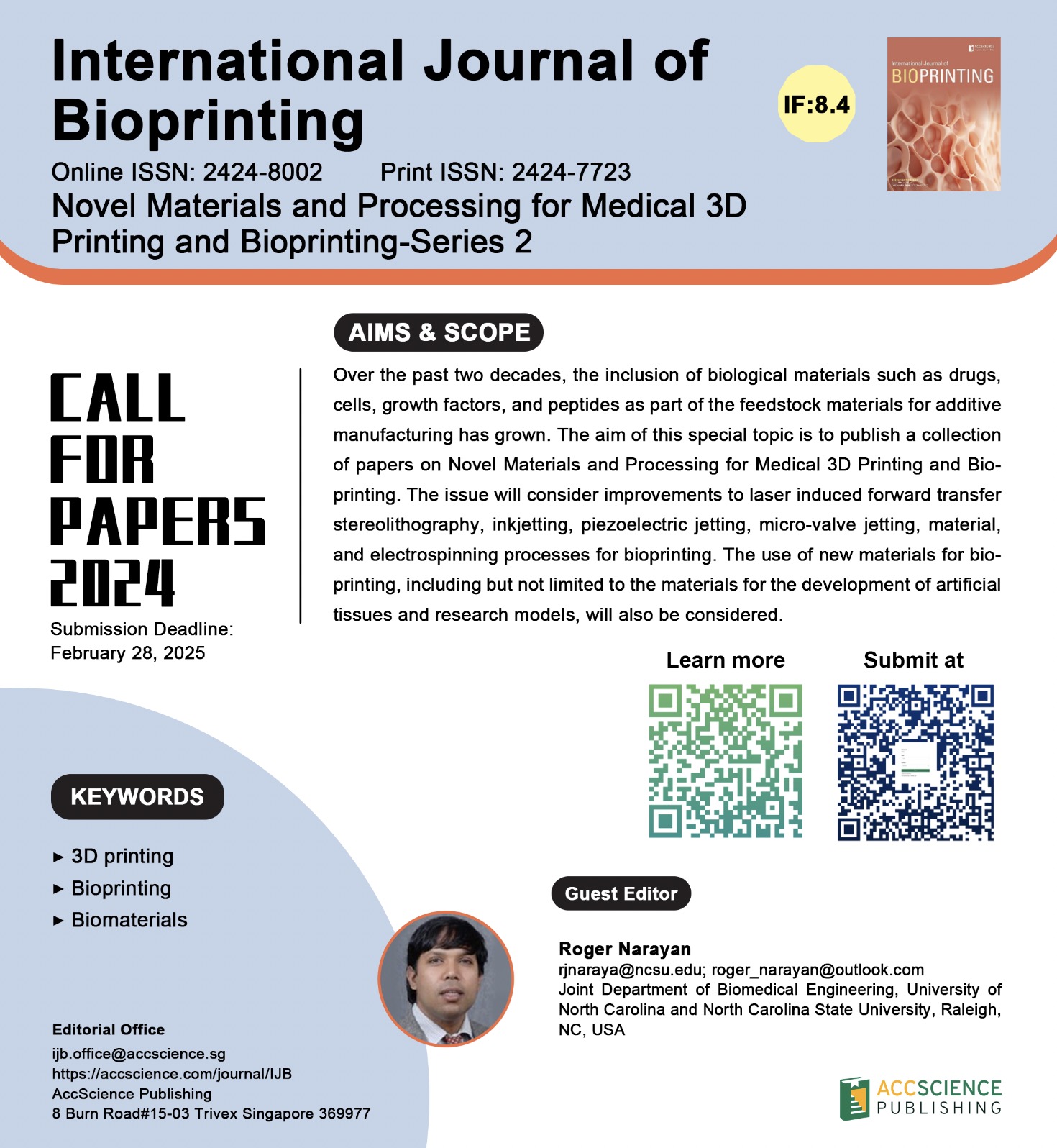
Over the past two decades, the inclusion of biological materials such as drugs, cells, growth factors, and peptides as part of the feedstock materials for additive manufacturing has grown. The aim of this special topic is to publish a collection of papers on Novel Materials and Processing for Medical 3D Printing and Bioprinting. The issue will consider improvements to laser induced forward transfer stereolithography, inkjetting, piezoelectric jetting, micro-valve jetting, material, and electrospinning processes for bioprinting. The use of new materials for bioprinting, including but not limited to the materials for the development of artificial tissues and research models, will also be considered.
Application of 3D-printed individualized porous tantalum buttress in shelf acetabuloplasty for developmental dysplasia of the hip
Improved osseointegration and segmental stability of 3D-printed porous tantalum cages with micro-scale structures for spinal fusion
3D bioprinting for tendon–bone interface regeneration
Computational investigation of a 3D-printed osteochondral interface scaffold with comprehensive interfacial mechanical properties


